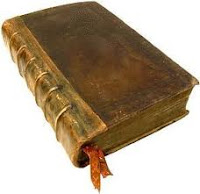Around the world the
museum is a monument, an institution like the library and the postal system,
denoting a level of societal achievement.
It can lend a small town in Nebraska a place in a travel guide. It can elevate a nation into
history. A museum-goer may carry a
small ball of pride and harbor a pinch of superiority at the time well spent.
The museum is a collection
of objects of scientific, artistic, cultural, or historical interest arranged
and displayed in accordance with a logical method and made available for public
viewing through exhibits. The word ‘museum’ is of Greek origin, and meant a
space dedicated to the muses - "a place where man's mind
could attain a mood of aloofness above everyday affairs." (Abridged definition taken from both Wikipedia and Dr. Wilson's Cabinet of Wonders) To that end it was a place to mediate
upon the world and practice the arts.
The first museum may have been an Athenian institute created by Plato or
merely a hill in Athens upon which an old man sat and sang until there he died, was
buried, and thus created a sanctuary. And in that dual origin
story we find both the beauty and the problem with the museum. What is a museum meant to do?
Consider the museums of
your lifetime. Though they may
preserve beautiful paintings or historic carvings or awe inspiring fossils the
museum can be a drool, potentially depressing archive of the past ensconced in
a pristine and grand manner. Like
a mortuary of human and natural spectacles, some sort of continual funeral
without a burial in sight, the museum preserves the past in an antiseptic manner. Perhaps inevitably so. Perhaps there is no other way.
Walking the halls we hover
somewhere out of time, induced to drowsiness by the atmosphere, as if a magical
spell poured in through the vents, a potion that frays the fabric of time until
we stumble about in a waking dream state.
Like Rip Van Winkle we doze off and awake to find years have passed
except in the case of the museum the years roll backward upon the rails not
forward.
In this state we are not taken away on flights of fancy, but instead we are led down a road of rigorous delineation of the world as if everything has its proper place. Here the
world is separated and catalogued.
The museum portrays a world of progress from age to age and culture to culture that ticks along like clockwork.
All the chaos and uncertainty and ambiguity of the world becomes domesticated in these halls. It’s
as if we wish to enclose Nature and History in a series of labelled Ziplock bags, as if we believe a stately
institutionalized palace could hold them in all their wonder.
All this certainty lends
authenticity and authority. Who
can argue with the art masters, the scientific pioneers, and the world explorers when all in one
place? Who can question the answers of learned experts, recorded voice-overs, brochures, and
captions neatly printed on foam core and mounted with the utmost attention to tidiness?
Somehow this is the world
we are more at home in though it is something fabricated, only a model of the world as it is. We can lounge in the well ordered and catalogued room with sharp distinctions. We breath easily in the home that works along well governed laws with no alternate answers.
The question is: Is it Real?
Next up: The Cabinets of Curiosity, the original
manifestation of the museum. And
don’t worry this is going somewhere culinary and delicious.








